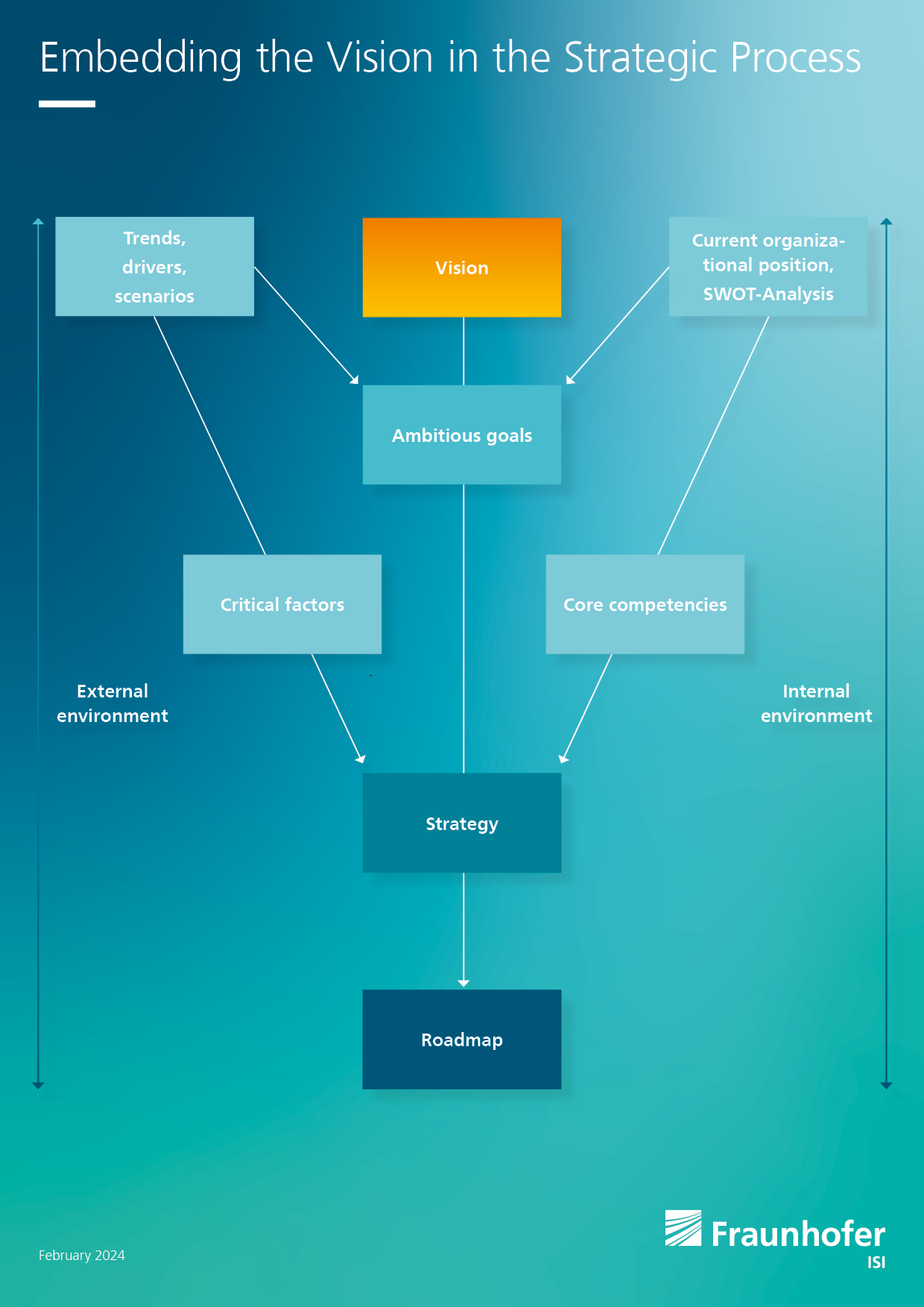A vision is intended to provide a team with guidance and motivation in their everyday work while strengthening cohesion. It clearly and inspiringly describes a desirable future for all group members. Depending on the focus, this may encompass internal organizational aspects such as “how we collaborate” or “what defines us”, as well as externally-oriented goals like “what do we want to achieve”. The target audience can range from the close circle of team members to external stakeholders such as partners, stakeholders, or customers. Methodologically, the success of Visioning processes hinges on creating a protected space for open exchanges about values and the current situation, fostering and encouraging such discussions. Hence, Visioning is often referred to as the “Future of the Heart”, contrasting with scenarios, which emerge from analytical work frequently describing the external environment, labeled as “Futures of the Head”.
In Visioning, it is crucial to mobilize the implicit knowledge (“gut feeling”) and imagination of the participants. Accordingly, we often employ creative methods such as time travel or image associations.
Uncovering shared goals that resonate with all stakeholders is a methodological challenge, addressed through context-specific dialogue and creative methods. Conversation rules (e.g., Appreciative Inquiry) are as crucial as a structured iterative approach, gradually allowing the shared vision to emerge from individual aspirations. A robust vision describes core aspects without getting lost in specific details, and can therefore last even if the design changes. When selecting participants for a visioning process, it's vital that each voice in a group is considered, ensuring that every subgroup is adequately represented (“whole system in the room”).
In strategic processes, visioning is often integrated with scenario development and roadmapping.
